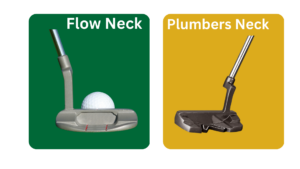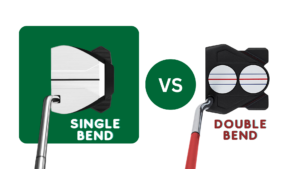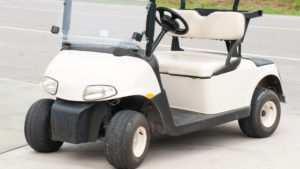Golfers often wonder how much a putting green costs. The answer depends on the type of green and its size, among other factors. There are many benefits to having a personal putting golf green in your own backyard or at the course you frequent, but it’s important to know what kind of investment you’re making before taking that plunge.
In this blog post, we will provide an overview of different types of putting greens available today and their associated costs, as well as some tips for choosing the right one for your needs so that you can get maximum enjoyment out of golfing with a minimal financial commitment. So if you’ve ever asked yourself “how much does a putting green cost?”, then this is definitely worth reading.

Table of Contents:
- Cost of Putting Greens
- Materials Needed:
- Installation Costs:
- Maintenance Costs:
- Types of Putting Greens
- Benefits of Having a Putting Green
- Tips for Choosing the Right Putting Green for You
- FAQs in Relation to How Much Does a Putting Green Cost
- Conclusion
Cost of Putting Greens
Putting greens can be a great addition to any golf course or backyard. They provide an opportunity for players to practice their short game and improve their overall skills. However, before investing in putting green, it is important to understand the costs associated with them.

Materials Needed:
The materials needed for putting green depending on the type of surface you choose. Artificial turf requires synthetic grass, infill material such as sand or rubber granules, and adhesive to hold it all together. Natural grass requires soil amendments such as fertilizer and topsoil as well as irrigation equipment if desired. Synthetic turf also requires its own specialized installation process that includes base preparation and drainage systems.
Installation Costs:
Installation costs vary depending on the size of your project and the complexity of the job itself. Generally speaking, artificial turf is more expensive than natural grass due to its specialized installation requirements while synthetic turf tends to be cheaper than both options due to its ease of installation but higher upfront cost for materials compared with natural grasses.
Maintenance Costs:
Maintenance costs are typically lower when using artificial or synthetic turfs since they require less upkeep over time compared with natural grasses which need regular mowing, fertilizing, and watering. Additionally, some types of artificial/synthetic turfs may require periodic brushing or power washing in order to keep them looking like new for longer periods of time, whereas this isn’t necessary with natural grasses unless you want them looking pristine year-round.
The cost of putting greens varies depending on the type of materials used and installation costs. However, it’s important to also consider maintenance costs when making your decision. Now let’s take a look at the different types of putting greens available for you to choose from.
Types of Putting Greens
Putting greens are an important part of any golfer’s game. They provide a great way to practice and improve your short game skills, as well as add some fun to the sport. There are several types of putting greens available on the market today, each with its own advantages and disadvantages.
Artificial Turf:

Artificial turf putting green is one of the most popular options for putting greens due to its low cost and easy installation process. It also requires very little maintenance, making it ideal for those who don’t have time or resources to devote to upkeep. However, artificial putting greens can be less realistic than other types of putting green surfaces, which may affect performance in certain situations.
Natural Grass:

Natural grass is often seen as the gold standard when it comes to golf course design because it provides a more realistic playing experience than artificial grass/turf does.
Unfortunately, natural grass greens require regular mowing and fertilizing in order to maintain their condition – something that many golfers simply don’t have time for or access too easily. Additionally, natural grass can be susceptible to damage from pests such as gophers or moles if not properly cared for over time.
Synthetic Turf:

Synthetic turf is another option that has become increasingly popular in recent years due to its durability and low-maintenance requirements compared with natural grass surfaces. Synthetic turf putting green typically offers better ball roll characteristics than either artificial or natural turfs do; however, it can be expensive upfront compared with other options and may require professional installation depending on your needs.
Putting greens can be an essential part of improving your golf game, regardless of whether you choose artificial turf, natural grass, or synthetic turf. However, the benefits don’t stop there; having putting green in your backyard can also increase enjoyment and reduce stress levels. Let’s explore these advantages further.
Benefits of Having a Putting Green
Having a putting green in your backyard or at your local golf course can be an incredibly rewarding experience. Not only will it improve your short game skills, but it can also increase the enjoyment of golfing and reduce stress levels.

Improved Short Game Skills:
Having access to a putting green allows you to practice more often and hone your short game skills. You’ll be able to work on different types of shots such as chips, pitches, and putts without having to leave home or take time away from other activities. With regular practice, you’ll soon find yourself sinking more putts than ever before.
Increased Enjoyment of Golfing:
A putting green is great for those who want to enjoy their favorite sport even when they don’t have the time or energy for a full round of 18 holes. It provides an opportunity for casual play with friends and family that doesn’t require any special equipment or rules like traditional golf does. Plus, there are no worries about getting stuck behind slow players since you can move at whatever pace suits you best.
Reduced Stress Levels:
Studies have shown that spending time outdoors in nature has positive effects on mental health including reducing stress levels. This makes having a putting green all the more beneficial since it gives people an excuse to get outside while still engaging in their favorite pastime – playing golf. Even if you don’t hit every shot perfectly, just being out in nature surrounded by beautiful scenery is enough to help lower stress levels significantly.
Overall, having access to a putting green offers numerous benefits both physically and mentally that make it well worth investing in one either at home or nearby courses near where you live. Whether its improved short game skills, increased enjoyment of golfing, or reduced stress levels – there is something here for everyone.
Having a putting green in your backyard can improve your short game skills, increase enjoyment of golfing, and reduce stress levels. With the right information and guidance on selecting the perfect putting green for you, you’ll be able to enjoy all these benefits without breaking the bank.
Tips for Choosing the Right Putting Green for You

When it comes to choosing the right putting green for you, there are a few things to consider.
- First and foremost is your budget. Artificial turf and synthetic turf can be more expensive than natural grass, so if you’re on a tight budget, natural grass may be the best option for you. It’s also important to research different types of greens available in your area before making any decisions. Different areas have different climates that can affect how well certain types of greens grow or last over time.
- Once you’ve narrowed down your options based on cost and availability, it’s important to consider the maintenance requirements associated with each type of green. Natural grass requires regular mowing and fertilizing while artificial turf needs occasional cleaning and brushing up to keep it looking its best. Synthetic turf has low maintenance requirements but may require occasional repairs due to wear-and-tear from heavy use or extreme weather conditions like hail or snowstorms.
Finally, make sure that whatever type of green you choose fits within your lifestyle as well as your budget constraints. If having an immaculate lawn isn’t something that interests you, then opt for an artificial or synthetic turf which requires less upkeep than natural grass does but still provides great golfing experiences.
FAQs in Relation to How Much Does a Putting Green Cost
Is a backyard putting green worth it?
Backyard putting greens can be a great addition to any golfer’s practice routine. It allows you to work on your short game in the comfort of your own home, and it can help you save time and money by avoiding trips to the driving range or golf course. But what about the backyard putting green costs?
Actually, a backyard putting green cost will vary depending on size and quality, but if you are serious about improving your game then it is definitely worth considering. With proper maintenance, a good tour-quality putting green should last for years and provide countless hours of enjoyment.
How much does it cost to build a putting green at home?
Building a putting green at home can be an expensive project. The cost of materials and labor will vary depending on the size, complexity, and location of the green. Generally speaking, expect to pay anywhere from $5-$15 per square foot for materials alone. Labor costs can range from $2-$10 per square foot or more depending on the difficulty of installation.
It is important to research local contractors in order to get accurate estimates for your particular project. Additionally, you may want to consider DIY options such as artificial turf or pre-made kits that come with everything needed for installation.
How much does it cost to build a real grass putting green?
The cost of building a real grass putting green depends on several factors, such as the size and complexity of the project. Generally speaking, it can range from $3 to $15 per square foot. This includes labor costs for excavation, drainage installation, soil preparation, and turf laying. It also covers materials like sod or seed mix, fertilizers, and top-dressing sand.
If you are looking for an artificial surface instead of natural grass, that will cost more but require less maintenance over time. Ultimately, the best way to determine your exact costs is to consult with a professional landscaper who specializes in golf course construction projects.
How much does it cost to put in a small putting green?
The cost of putting in a small putting green depends on several factors, such as the size and complexity of the project. Generally speaking, you can expect to pay anywhere from $2,000 to $5,000 for a basic setup with minimal landscaping.
If you choose to add more complex features like contours or water hazards, the price could increase significantly. Additionally, labor costs should be factored into your budget if you plan on hiring professionals for installation. Besides, if you try multiple cuts of fringe and fairway turf then the labor cost will increase up to 10%. Overall, it is important to research all available options before making any decisions about your new putting green.
Conclusion
The cost of putting greens can vary greatly depending on the type and size you choose. If you are looking for a quality putting green that will last for years to come, it is important to consider all your options and weigh up the pros and cons before making your decision.
By understanding how much does a putting green cost, what types are available, the benefits they offer, and tips for choosing one that suits your needs best, you can make an informed decision when investing in a new golfing accessory.






